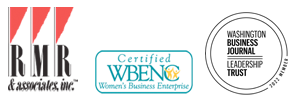Did you catch RMR’s recent column in Washington SmartCEO Magazine? If not, the article can be found below. You can also find all of RMR’s articles from the magazine here.
Direct marketing can be a huge asset to any organization. Whether online or printed, unlike advertising, it can be sent to a carefully selected audience. Unlike public relations, you have total control over the message and the delivery. Unfortunately, it can also be tricky. In a medium where a 3% response rate is considered a success, you want to be sure to leverage every tool you can. The best way to do that is to pay attention to three basic components of your campaign: the list, the offer and the creative.
1.) The list
The list alone is responsible for 60% of your campaign’s success or failure. You may have a compelling offer and great creative, but if it’s going to the wrong people, you’re wasting your time and money. If you operate an ice cream parlor in Germantown, MD, but are sending direct mail to people in San Francisco, it’s fairly certain that you won’t see a big response.
- Choose lists that pre-qualify your targets as being interested. Subscribers to magazines in which you advertise or owners of systems you support are just two examples. The added benefit of sending to magazine subscriber lists is that if prospects have already seen your ad, they will have some awareness of your company once they receive the direct mail.
- Direct-response lists will almost always deliver better results than compiled lists.
- Lists that target your prospects by job function, lifestyle, income and other factors will always improve response. The more targeted your list is, the greater your chance of a good response. If you know most of your current customers are married men over the age of 35 who earn over $60,000 per year, have a college degree and like to watch football and you send a direct mail piece to people who match those criteria, your odds for success increase dramatically.
2) The offer
Once you have your list, you need to come up with your offer. This accounts for 30% of your campaign’s results.
- Sell the offer, not the product. The offer is what the recipient gets for responding. If you are selling a million-dollar software system, the chances of your closing a sale based solely on a direct mail campaign are slim. However, the chances of you getting someone to come to a seminar, visit your tradeshow booth or download your white paper is much higher.
- Price can be the offer if it’s a bargain. Offers such as “50% off” or “Buy one get one free” are compelling reasons to respond.
- Money-back guarantees and free trial periods are powerful offers in Tech marketing. With high-ticket items or new technology, there is often a sense of fear, uncertainty and doubt (FUD) for the prospective buyer. By giving a guarantee, you can decrease the FUD factor and increase your response rates.
- Include a call to action with a deadline. Conditions such as “Respond by October 31st” or “Call in the next 30 days” will help motivate people and will allow you to gauge the success of your campaign more quickly.
3) The creative
The final part of a direct mail campaign is the creative. The look of a direct mail piece is responsible for 10% of the campaign’s pull, and often the creative decides if it makes it past the secretary and stays out of the “round file” better known as a trash can.
- Start selling on the envelope. Remember, the piece’s first job is to get noticed and opened. The exception to this rule is for direct mail targeted toward the government market, as they have certain rules about mail that looks like a sales piece.
- Continue the sell inside. If it was compelling enough to get the prospect to open it, don’t lose that momentum. Pay off the promise printed on the outside.
- Make it easy to respond. Provide an 800 number, e-mail address, website, or postage-paid business reply card (BRC).
There are thousands of other variables to consider with direct mail campaigns: Do you send the pieces first class or bulk rate? How do you track the responses? Do you personalize each piece? How do you handle returns? Working with an experienced marketing agency can help you answer these questions and can help increase your chances of a highly successful campaign. However, knowing the three basic components will put you ahead of the game.
#
